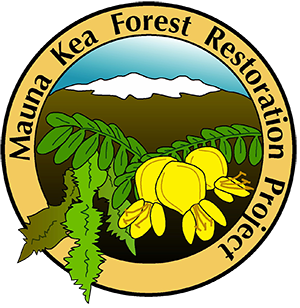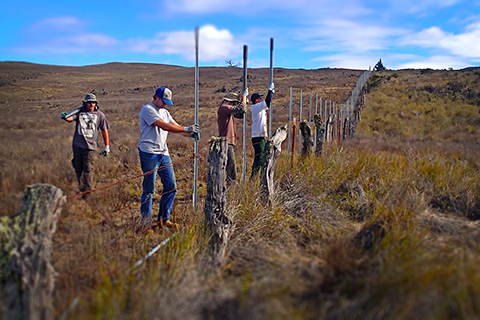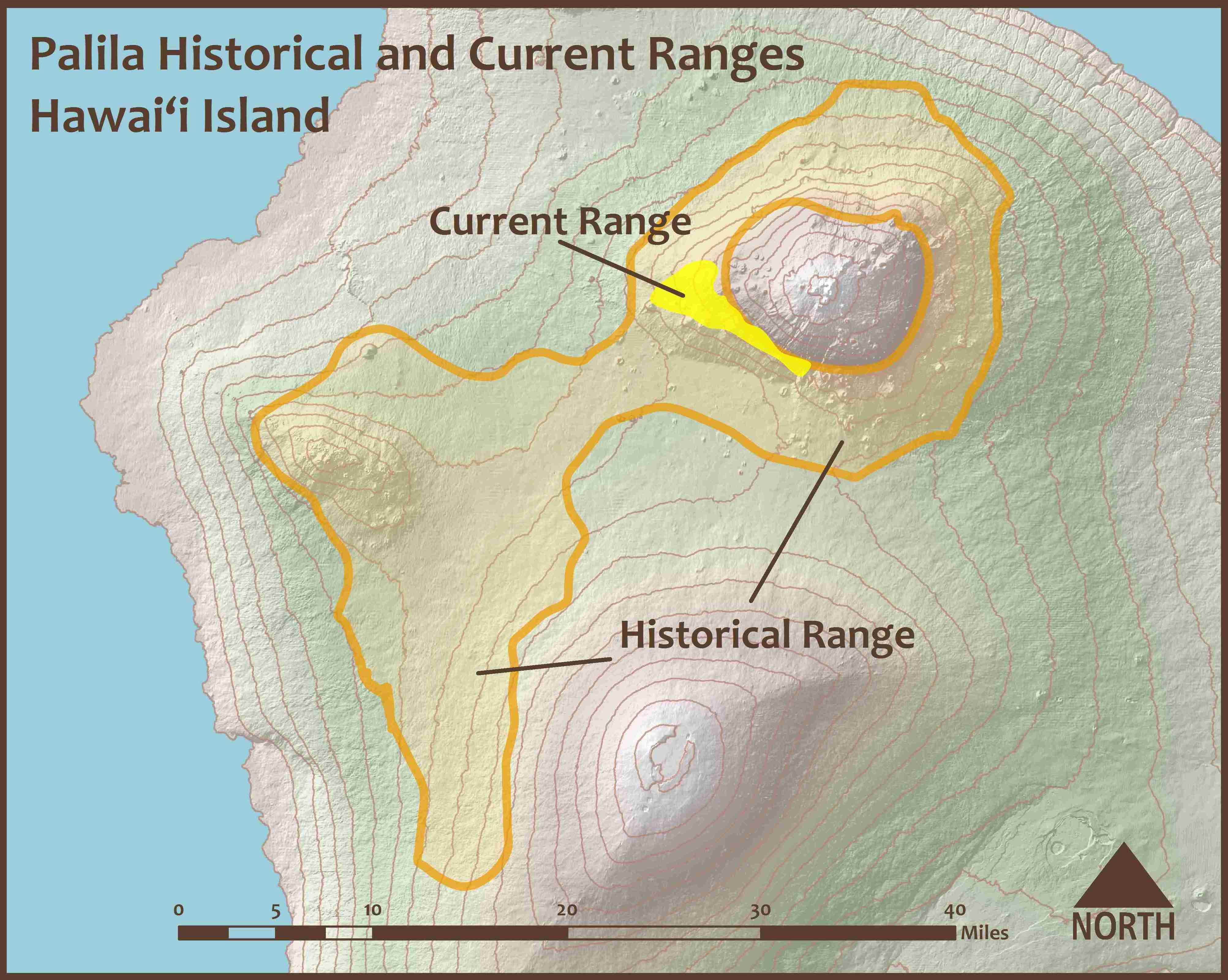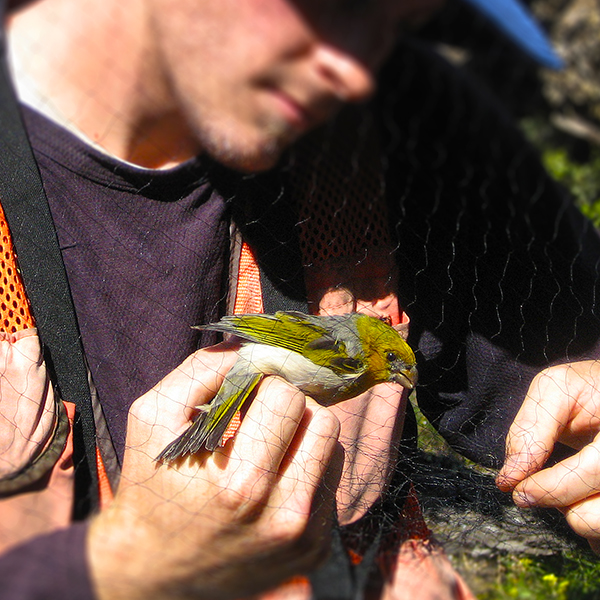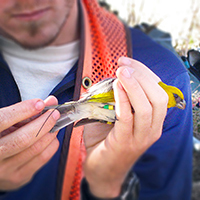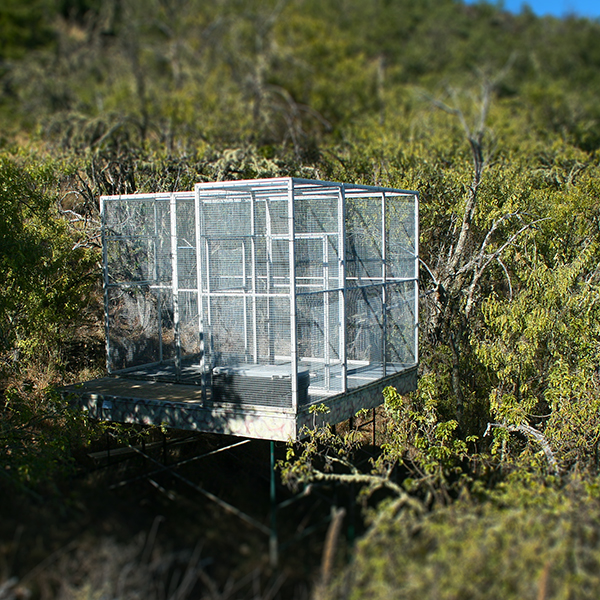Management
After centuries of negative impacts from introduced animals, insects, and invasive plants, the high-elevation forest of Mauna Kea and its wildlife need our help. With intensive management by partnerships with the State and Federal governments, non-profits, and volunteers, the forest will be protected for generations to come.
|
Palila Management
Palila only occupy an area of less than 5% of their historical distribution on Hawai’i island. This area is on the southwestern slope of Mauna Kea – the area with the best and largest amount of remaining habitat. The potential for extinction is greater for isolated populations that occur in small areas. A large wildfire or an increase in disease prevalence, for instance, could quickly wipe out this small, isolated population of palila. To reduce this risk and test reintroduction methods, an attempt was made to establish another palila population near Pu‘u Mali on the northern slope of Mauna Kea.
Translocation (1996-2006)
Translocations of palila by the United States Geological Survey (USGS): From 1997 – 2006, the USGS captured 188 palila from the southwestern slope of Mauna Kea and released them at Pu’u Mali on the northern slope. The birds were captured in mist-nets and then banded with a unique combination of four colored leg bands so each individual could be identified if they were re-sighted. Also, 173 of the 188 captured palila were equipped with radio-transmitters so their movements could be monitored. The tiny battery in the transmitter lasted about 8 weeks.
Results of 188 palila translocated to Pu’u Mali from 1997 – 2006
Birds are banded with colored leg bands for monitoring when released. Palila equipped with a transmitter and leg bands that was released near Pu‘u Mali. Searching for released palila with radio telemetry
Captive reared birds
Keauhou Bird Conservation Center (KBCC) released 28 captive-reared palila from 2003–2009 at Pu‘u Mali on the northern slope of Mauna Kea in conjunction with USGS efforts to establish a new palila population. Some KBCC palila were observed for several years after their release. Three fledglings (juvenile birds mature enough to fly) were produced by mixed pairs of two KBCC palila and two USGS translocated palila. KBCC is in Volcano, Hawai’i and is operated by the San Diego Zoo Institute for Conservation Research as part of its Hawai’i Endangered Bird Conservation Program.
Before being released, captive-reared palila live in “hack towers.”
|
